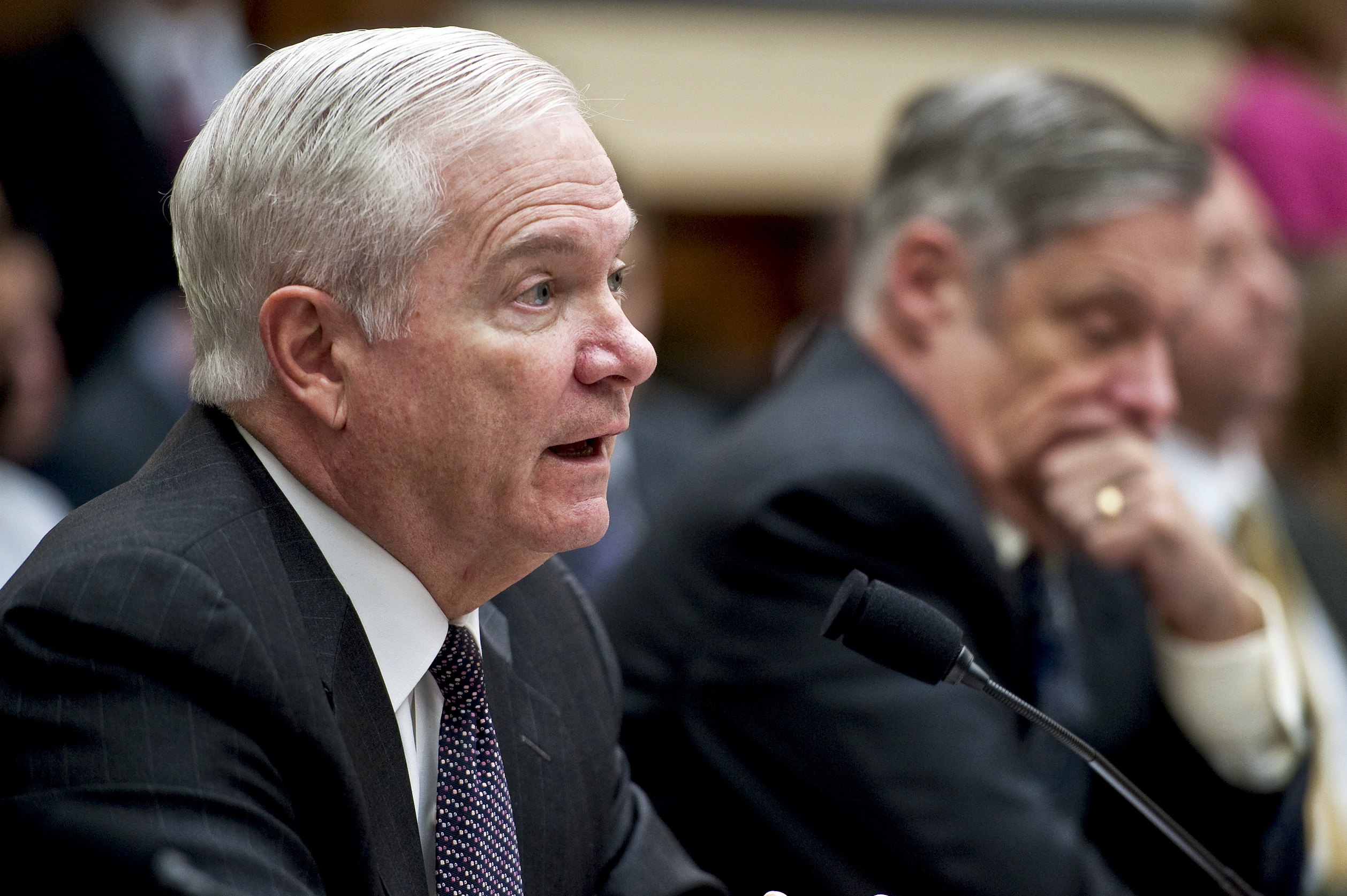
Secretary Robert Gates explains the impossibility of reaching "zero threat" / DoD photo
Defense Secretary Robert Gates has wrapped up two days of testifying before armed services committee — perhaps his final appearance before both panels — and the House gave him a nice going-away present: it voted to kill the $3 billion second-engine line for the F-35 fighter. As the debate over the power plant showed, defense-budget cuts are going to become increasingly tougher to sell amid a struggling economy. Yet, the influx of freshmen GOP Republicans, many of whom voted to kill the engine, shows that the Republican Party will no longer be marching in lockstep for more defense spending.
That’s the good news. The bad news is this exchange from Wednesday’s hearing before the House Armed Services Committee. It’s between Gates and Rep. Duncan D. Hunter, a Republican who succeeded his father, Duncan L. Hunter, in representing California’s 52nd district near San Diego. The younger Hunter served two combat tours in Iraq and one in Afghanistan as a Marine field artillery officer before his election to Congress in 2008, so he’s got the bona fides to ask the question. It’s just that his notion is such a zany way to figure out how to defend the nation:
REP. DUNCAN HUNTER (R-CA): You talked about the defense budget, you talked about the total layouts and how this is the lowest point since the ’90s — since before World War II where we’re at the low part where we’re at now, where there is so little being spent on defense — and I would argue and ask your opinion of this. If you don’t give us a top line, if you don’t ask for what it would cost to erase all risk, literally — or as much risk as possible — then we have no baseline to cut defense from, or to add to, really, because the numbers that we’re using are limbo numbers, really, because if you were to fully fund defense — this is my question.
If you were to fully fund defense and take away a hundred percent as best as you could, a hundred percent of risk using your own threat assessment tools and analysis, what would that funding be? What would you ask for?
SEC. GATES: I have only half-jokingly said in meetings in the department that if we had a trillion-dollar budget, I would still have unfunded requirements.
REP. HUNTER: Yeah, that’s right.
SEC. GATES: The services would still be able to come up with a list of things that they really need.
I think that the budget that we’ve provided at $553 billion for FY ’12 mitigates risk to the extent that I think is reasonably possible. And I think that we have — we are investing in new capabilities — the $70 billion that the services are going to be able to invest from their savings in new capabilities or in added numbers I think helped mitigate that risk.
You can never reach a point — just as there is no such thing as perfect security, there is no such thing as eliminating risk.
REP. HUNTER: …If you got to that highest point that you could where you started getting diminished rate of return, what would that number be, roughly?
SEC. GATES: I think that we are at a point with the 553 (billion dollars) where we can do that.
REP. HUNTER: Okay. So fully funding defense and every requirement is at 553 (billion dollars)?
SEC. GATES: We will never fund every request.
REP. HUNTER: But if you did, sir, what I’m asking is, what’s that number, roughly?
SEC. GATES: I have no idea how much —
REP. HUNTER: You haven’t thought about what it would cost to really satisfy the requirements of all the different services?
SEC. GATES: Nobody lives in that — nobody lives in that world.
REP. HUNTER: No, but what you’re supposed to do is tell us how do we — how get to zero threat, and Congress then decides what to fund.
SEC. GATES: And I’m telling you you are never going to get to zero threat.
REP. HUNTER: We can try.


